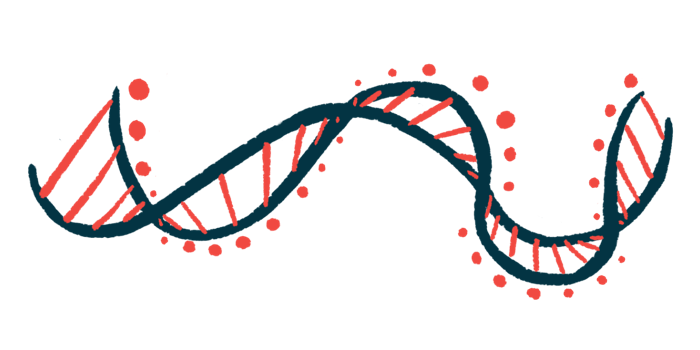Scientists develop promising, safer way to deliver gene-editing therapy
Approach modifies cells directly in the body without need for chemotherapy

Researchers have developed a new way of delivering gene-editing therapies for people with blood disorders such as sickle cell disease (SCD), which could improve treatment safety and lower costs if eventually adopted in the clinic.
Instead of a standard method that requires a round of chemotherapy before externally-edited cells are delivered back into the body, the new technique allows a person’s cells to be modified directly in the body without the need for chemotherapy or radiation therapy.
Co-developed by researchers at the Children’s Hospital of Philadelphia (CHOP) and the Perelman School of Medicine at the University of Pennsylvania, the approach was able to correct mutations in cells from SCD patients, leading to a more than 90% increase in hemoglobin, the protein that’s faulty in the disease.
“These findings may potentially transform gene therapy, not only by allowing cell-type specific gene modification in vivo [in the patient’s body] with minimal risk … but also by providing a platform that, if properly tuned, can correct many different … disorders,” Laura Breda, PhD, research assistant professor at CHOP and the study’s first author, said in a press release.
Novel system could potentially help ‘ablate a wide array of human diseases’
“Such novel delivery systems may help translate the promise of decades of concerted genetic and biomedical research to ablate a wide array of human diseases,” Breda added.
The approach was described in the study “In vivo hematopoietic stem cell modification by mRNA delivery,” which was recently published in Science.
In SCD, mutations in the beta-globin (HBB) gene cause the production of a faulty version of hemoglobin, the protein that helps red blood cells carry oxygen.
Currently, the only potentially curative treatment option that’s available for patients is a bone marrow transplant from a healthy donor, which provides patients with healthy hematopoietic stem cells (HSCs), or blood stem cells, to populate their blood with healthy cells.
Gene-editing therapy is gaining traction as another potentially curative approach for SCD and other genetic blood disorders, such as beta thalassemia. No gene-editing therapies are approved for SCD yet, but some are being evaluated in clinical trials.
Broadly, such a therapy involves removing a person’s HSCs which then undergo a one-time genetic modification to correct the underlying cause of the disease. Cells are then returned to the patient via a stem cell transplant.
This is a big step forward in how we think about treating genetic diseases and could expand the access of gene therapies to patients who need them most.
Current gene-editing treatment involves chemotherapy, radiation
For a healthy donor transplant or gene-editing treatment, patients must undergo a round of chemotherapy or radiation to kill off their faulty blood cells and make room for new ones before the transplant.
“Right now, if you want to treat hematologic diseases like sickle cell disease and beta thalassemia with gene therapy, patients must receive conditioning treatments like chemotherapy to make space for the new, corrected blood cells, which is both expensive and comes with risks,” said Stefano Rivella, PhD, a senior author and professor of pediatrics at CHOP.
To bypass these limitations, the scientists developed a “one-and-done” approach for directly editing the cells in the body without the need for chemotherapy, according to Rivella.
Messenger RNA (mRNA)-based gene-editing tools were packaged into tiny fatty vesicles called lipid nanoparticles that are highly effective at delivering mRNA into cells (mRNA is an intermediate molecule that serves as a template for protein production from DNA).
The nanoparticle approach is similar to that used in some mRNA-based vaccines for COVID-19, although those vaccines did not target specific cells or tissues.
A gene therapy for SCD or other blood diseases would need to target HSCs directly. To achieve that, the researchers coated the nanoparticles with an antibody that recognizes the CD117 protein found on the surface of HSCs.
They then tested how effective this system would be for delivering an SCD gene-editing therapy, which was expected to convert a disease-causing mutation into a non-harmful gene variant that wouldn’t affect hemoglobin production.
New gene-editing system led to 91.7% increase in functional hemoglobin
The new editing system allowed for an almost complete correction of cells obtained from SCD patients, resulting in up to a 91.7% increase in functional hemoglobin and a nearly complete absence of the sickled blood cells that cause SCD symptoms.
Moreover, nanoparticles packaged with the mRNA for PUMA, a protein that promotes cell death, were able to deplete HSCs and allow for the uptake of new bone marrow cells without the need for chemotherapy.
“This is a big step forward in how we think about treating genetic diseases and could expand the access of gene therapies to patients who need them most,” Rivella said.
Two of the study’s authors are employed by Acuitas Therapeutics, a company specializing in nanoparticle-based therapeutic delivery.








